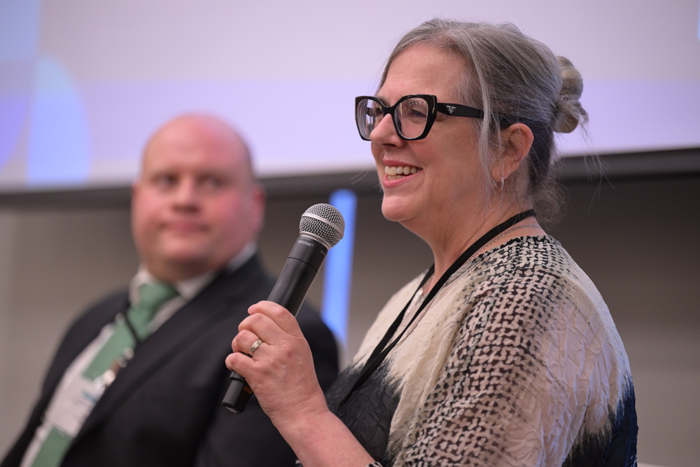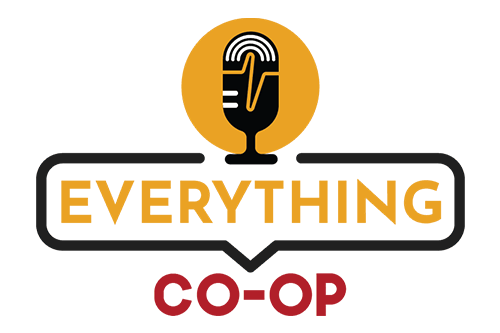
At the 2025 National Home Care Cooperative Conference, held in March at the National Rural Utilities Cooperative Finance Corporation in Dulles, Virginia, employee ownership advocates connected directly with caregivers, making the case for stronger public investment and policy advocacy to protect and expand the cooperative care economy.
As uncertainty looms over federal funding, panelists underscored the need for grassroots coalition-building and data-driven storytelling to advance legislative action.
“Advocacy starts with education,” said Aaliyah Nedd, a panelist and director of Government Relations at NCBA CLUSA. “So much of our time is spent helping policymakers understand the cooperative model and the power of shared ownership.”
With the Year of Cooperatives putting co-ops in the national spotlight right now, 2025 is a unique opportunity to elevate the visibility of employee ownership and push for policies that strengthen job quality, worker retention and resilience within the care economy.
A shifting policy landscape
Urgent policy issues, such as threats to Medicaid funding and immigration, framed the conversation. Not only is Medicaid the largest payer in the home care space, it’s also what many direct care workers—who are overwhelmingly women and often immigrant women of color—rely on for their own healthcare. Officially, at least 28 percent of direct care workers are immigrants, but that percentage is likely a “steep undercount,” said Jake McDonald, senior policy advocacy specialist at PHI.
Against this backdrop, the imperative of living wages for caregivers is seemingly at odds with the need to keep care affordable for seniors and other fixed-income clients.
“We often hear this called a paradox. It’s not a paradox. It’s a lack of public investment,” McDonald told conference attendees.
At the same time, key federal policies like the Work Act and Main Street Employee Ownership Act are in play—either under threat or in need of stronger implementation. These policies directly impact job quality, funding access and the long-term viability of worker ownership in the care economy and beyond.
While the shifting policy landscape at the federal level has shaken some industry stakeholders in recent months, cooperative advocates are working to mobilize around new opportunities.
While the shifting policy landscape at the federal level has shaken some industry stakeholders in recent months, cooperative advocates are working to mobilize around new opportunities.
“If we look at the history of cooperative ecosystems, we’ve seen large scaling up of sectors during times when there’s a real reckoning with our nation’s future in terms of what our policy environment will look like,” Nedd said.
Check out our Cooperative Business Playbook Cooperative Care Sector Policy Points
Building coalitions and state-level advocacy
At the state level, coalitions of caregivers, clients, employers and labor allies are already leading advocacy efforts to boost public investment. PHI supports local organizing efforts in 18+ states. In New Jersey, a coalition called Essential Jobs, Essential Care represents 60+ organizations and people working to transform direct care jobs in the state. Caregivers, employers and people receiving care are all aligned in the need for more public investment—to lift wages and strengthen the caregiver workforce, keep care affordable and sustain the care economy long-term.
Hilary Abell, a panelist and division chief of the U.S. Department of Labor’s Employee Ownership Initiative, encouraged conference attendees to build relationships with state-level economic development offices and labor departments where they can plug into broad-based employee ownership efforts that “hold the greatest benefits for both businesses and workers,” she said.
“The more we make visible the great work folks like you are doing on the ground every day in critical industries like home care, the more the cooperative idea gets normalized… and the more momentum we build,” Abell said.

One low-lift way cooperators can get involved is by leading efforts in their city or state to pass resolutions recognizing 2025 as the Year of Co-ops, following Philadelphia’s model.
“It’s an easy ask because it doesn’t require any money, but it opens the door to further engagement that everyone today has said is so important,” said Mo Manklang, who moderated the panel and serves as policy director at the U.S. Federation of Worker Cooperatives. And policy wins are more likely when driven by coordinated local and state action.
Data-driven storytelling
The U.S. Census Bureau projects that the population of adults aged 65 or older in the U.S. will increase dramatically from 57.8 million (in 2022) to 88.8 million by 2060. Over the same period, the number of adults aged 85 and older are expected to triple, driving rapid growth in the direct care workforce.
In the context of persistently high turnover, home care employees are struggling to recruit and retain enough workers to meet this escalating demand.
Policymakers are primed for a solution—and cooperative offer one. As employee-owned businesses, co-ops provide better on-the-job training, a path to ownership and higher wages and benefits, resulting in decreased turnover and higher quality, consistent care. Research by the ICA Group indicates that turnover at home care cooperatives is lower than the overall industry by at least 20 percentage points.
“Co-ops have thrived and are built for moments like this when we’re looking for a path forward because we know that [co-ops] keep quality jobs in communities and put dollars back into the hands of local folks.” – Aaliyah Nedd, NCBA CLUSA
“Co-ops have thrived and are built for moments like this when we’re looking for a path forward because we know that [co-ops] keep quality jobs in communities and put dollars back into the hands of local folks,” Nedd said.
Telling that story to policymakers in a compelling, unified way is critical, panelists agreed. “Making sure we’re speaking together with one voice is something that is incredibly valuable during this moment,” Nedd said.
Joining membership associations like NCBA CLUSA and the U.S. Federation of Worker Cooperatives is a great way to plug into existing efforts and “share the advocacy load,” Manklang said. “It’s not just about being a member of an association; it’s about meeting the moment. We know that in times of trouble, cooperatives have always risen to the challenge, and as long as [policymakers] know that co-ops are a solution, they will turn to them,” she said.

